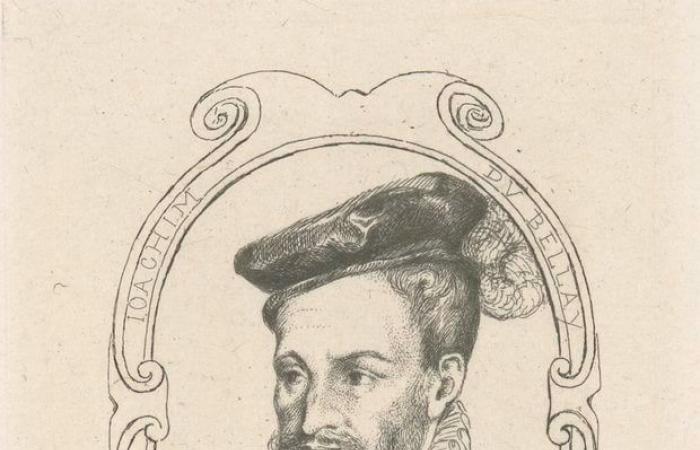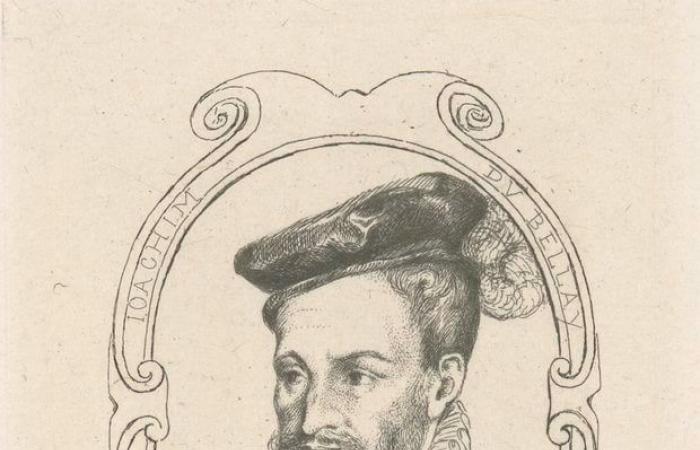In mid-September, the famous Parisian cathedral was back in the news. According to the conclusions of a meticulous investigation, an anonymous corpse found at Notre-Dame is that of the Loire poet who died in 1560.
Happy is he who, like Ulysses, has made a beautiful journey… Under Notre-Dame, Île de la Cité, there are approximately a thousand graves, mainly of old religious people who died between the 14the and 18e centuries. This necropolis had quietly lurked underground since the end of burials on the religious site in the 18th century.e century, allowing the floods of the Seine, the urban works… but not the devastating fire of 2019. In 2022, during preventive archeology research linked to the rehabilitation work on the destroyed cathedral (and entrusted to Inrap by the law of July 30, 2019), two anthropomorphic lead sarcophagi were found at the crossing of the transept, a very prestigious place. One bears an epitaph with the mention of Antoine de La Porte, canon of the cathedral for more than fifty years who financed the end of the work on the choir of the building from his own pocket. The second is anonymous. A mystery that the Inrap teams sought to resolve.
Did you know? Whether the corpse is from yesterday or four centuries ago, the processes for identifying corpses follow the same directives, issued by the international criminal police organization (Interpol), responsible, among other things, for finding missing people. or to identify anonymous corpses. Of course, the primary identification elements are the most reliable elements to formally establish a person's identity: fingerprints (or “papillary ridge analysis”), teeth (forensic odontology) and DNA (genetic analysis). But what to do when time has swept away everything? So these are secondary elements, a bundle of clues, which allow us to arrive at a hypothesis, or a conclusion.
In 2014, under the Jacobins Convent in Rennes, Éric Crubézy, professor of anthropobiology at Toulouse III University, worked on the discovery under the Jacobins Convent in Rennes of the remarkably preserved body of the noblewoman, Louise de Quengo, who died in 1656 and also surrounded in a lead sarcophagus. Actu-Juridique interviewed the fascinating scientist on the origin of his hypothesis and who is preparing the release of a book on the subject, next January, from Odile Jacob.
News-Legal : How do the methods you use in this type of research differ from forensic medicine?
Eric Crubézy : What is interesting is that it is an identification from a legal point of view. The question that arises in a case like that of Notre-Dame concerns the identification criteria. These criteria are regularly reviewed by Interpol. There are true identification criteria, which are based on teeth, prints and DNA, which mean that when someone disappears and a body is found, we compare the DNA found on the body with that found on the toothbrush of the missing person or a member of his or her close family. We come across a certain identification. For populations of the past, it is different of course. Already because finding Joachim du Bellay's toothbrush would be a poetic idea, but also because it would be absurd to try to compare the DNA present on the skeleton to possible descendants, knowing that 15 to 18 generations separate us of him, that he had no known direct descendant and that the collateral branches would have died out in the 17the century. As for autosomal DNA (the one on which the DNA tests which abound on the market are based), it does not work beyond six generations: the only conclusion that this could bring us is to say that it was European.
AJ: How does identification happen in the absence of these methods?
Eric Crubézy : We are going to work on a set of arguments which will lead, according to Interpol, to an identification from possible to very probable. Personally, I lean towards the very probable (other Inrap scientists are more doubtful, Editor's note). This is how we worked and investigated: reliably we know that we have a skeleton with pathology, someone who rode a horse, an age between 30 and 40 years old, because the clavicle is fused and no trace of osteoarthritis on the ear surface and a male gender. It's interesting because there are really very few young people buried at Notre-Dame: out of a sample of 400 subjects, we only found traces of an epitaph mentioning a young death. Then, as the forensic institute of Toulouse discovered, he is in a lead coffin whose carbon 14 dating gives us the XVIe century (the poet died at age 38, in 1560). The elites, to which the Du Bellay family (first royal and papal entourage) belonged, were buried in anthropomorphic lead so that the skeleton would keep as much of its integrity as possible when the angel sounded the end of time. In the spirit of the times, it was necessary to bury the dead in a church so that they could continue to hear mass and in a cathedral for families of a certain rank wanting to honor their dead with prestige. Then, the subject had cervical damage linked to tuberculosis and we have epidemiological studies which show that these cases of meningeal tuberculosis were very rare, barely 3 subjects out of 1,000. And we have data in the literature of the time confirming that Joachim du Bellay suffered from such a condition. So we have a bundle of presumptions, of arguments.
AJ: How did we know that Joachim du Bellay was probably buried there?
Eric Crubézy : General de Gaulle's grandfather, the historian Julien Philippe de Gaulle, had found the act of the chapter which mentioned the fact that upon the death of the poet, his family had wanted him to be buried in the Saint-Chapelle. Crépin with his adoptive father, also his uncle. We know that in the 18th centurye century, work concerned this chapel and we found dozens of sectors with plaques on the tombs, notably that of Louis du Bellay, but no trace of that of Joachim du Bellay. The fact that it was found at the crossing of the transept may suggest two things: it could have been a transitional burial because we found a similar case in the Du Bellay family, in the Church of Le Mans, where a body remained in the transitional burial because the work on the vault had taken too long to be completed (lack of funds). We finally found the uncle at the crossing of the transepts. We must say to ourselves that we are faced with a Da Vinci tails in the French way… for the moment all these clusters of clues and many others point towards the formal identification of Joachim du Bellay.
AJ: Who will ultimately make the decision whether or not to identify the body?
Eric Crubézy : The skeletons will be returned by Inrap to the Ministry of Culture who will be able to decide what to do with them.







